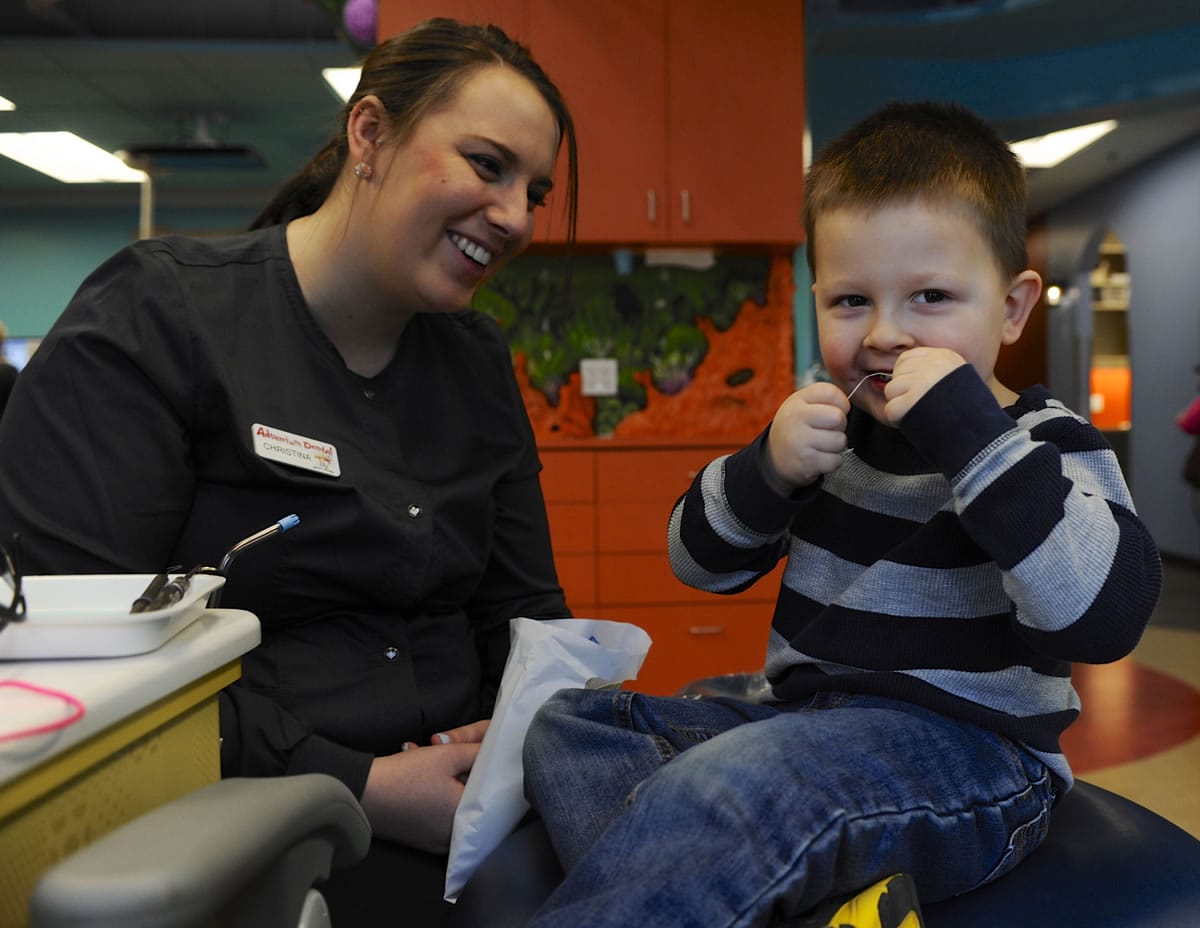February is National Children’s Dental Health Month. Visit the American Dental Association, www.ada.org, for more information.
Even the smallest teeth are at risk for decay. That’s why dentists are urging parents to bring their little ones in for exams, even when they only have a tooth or two.
In the past, children didn’t typically see a dentist for the first time until about age 3. Now, however, dentists want to see kids six months after the first tooth erupts or by the time the child turns a year old.
Getting children into a dentist’s office early establishes a dental home, where parents can ask questions about their kids’ teeth and dentists can offer tips.
“If we can give good education when they’re a year old, many, if not all, of these kids can go (cavity)-free,” said David Neil, a pediatric dentist at Adventure Dental in Salmon Creek.
The early visits also give dentists a chance to assess the child’s risk for decay. Poor oral hygiene and high-sugar diets can put children (or anyone) at higher risk, as can some genetic components, Neil said.
By the age of 3, an estimated 5 to 10 percent of children have oral health issues, according to the American Academy of Pediatric Dentistry. By the age of 5, about 60 percent of U.S. children will have had caries (or cavities) at some point, according to the academy.
To help prevent decay, brushing should begin as soon as the first tooth comes in.
Parents of children who are nursing should use a baby tooth brush after the child eats to wipe the teeth clean, Neil said. They should also avoid sending the
child to bed with a bottle of milk or juice, he said.
Children’s teeth should always be brushed before bedtime, regardless of their age, said Linh Vo-Cheng, pediatric dentist at Kaiser Permanente’s Cascade Park dental office.
Bacteria in the mouth breaks down food on the teeth and gums. That process produces acid. Saliva production slows during sleep, leaving the acid in the mouth longer, Neil said.
“(The acid) erodes the teeth more quickly as you sleep,” he said.
For that reason, dentists recommend children brush and floss before bed. Brushing in the morning is also important.
“If they can do those things really well, most of them won’t get cavities,” Neil said.
For brushing, kids should use a soft-bristled toothbrush. Children younger than 2 should just get a smear of toothpaste across the bristles. Once kids can spit, they can use a little more fluoridated toothpaste, about a pea-sized amount, the dentists said.
“We want to be careful not to give kids gobs where they’re swallowing it,” Vo-Cheng said.
Parents should do the brushing until kids are old enough to write their name really well in cursive, Vo-Cheng said. For some kids, that’s until age 7 or 8, she said, but that’s when kids have developed the fine motor skills necessary to adequately brush.
Preventing decay is important because the enamel on primary teeth is much thinner and weaker than that of permanent teeth, Neil said. That can cause cavities to spread faster and become more severe, he said.
There are also things kids can do between brushings to help prevent decay.
Eating candy or drinking juice at one sitting, for example, limits the number of times the teeth are attacked by acid, Vo-Cheng said. Drinking water also helps flush the mouth and dislodge food particles stuck between teeth, she said.
“We don’t want to deny the kids anything,” Vo-Cheng said. “But if we can limit the time period they’re in this acid environment, that can help because it’s not going to break down the tooth.”
Certain foods can also cause decay at a more rapid rate. Sticky foods such as fruit snacks or raisins cause decay much faster than hard, crunchy fruits and vegetables, such as carrots and apples, Neil said. Proteins, such as cheese and peanut butter, also cause very little decay, he said.
Even though the primary teeth will be replaced by permanent teeth, caring for baby teeth is still important, Vo-Cheng said.
“If they start down the road of getting cavities, it means they’ve cultivated that environment in their mouth to get cavities,” she said. “All that bacteria won’t go away miraculously.”




